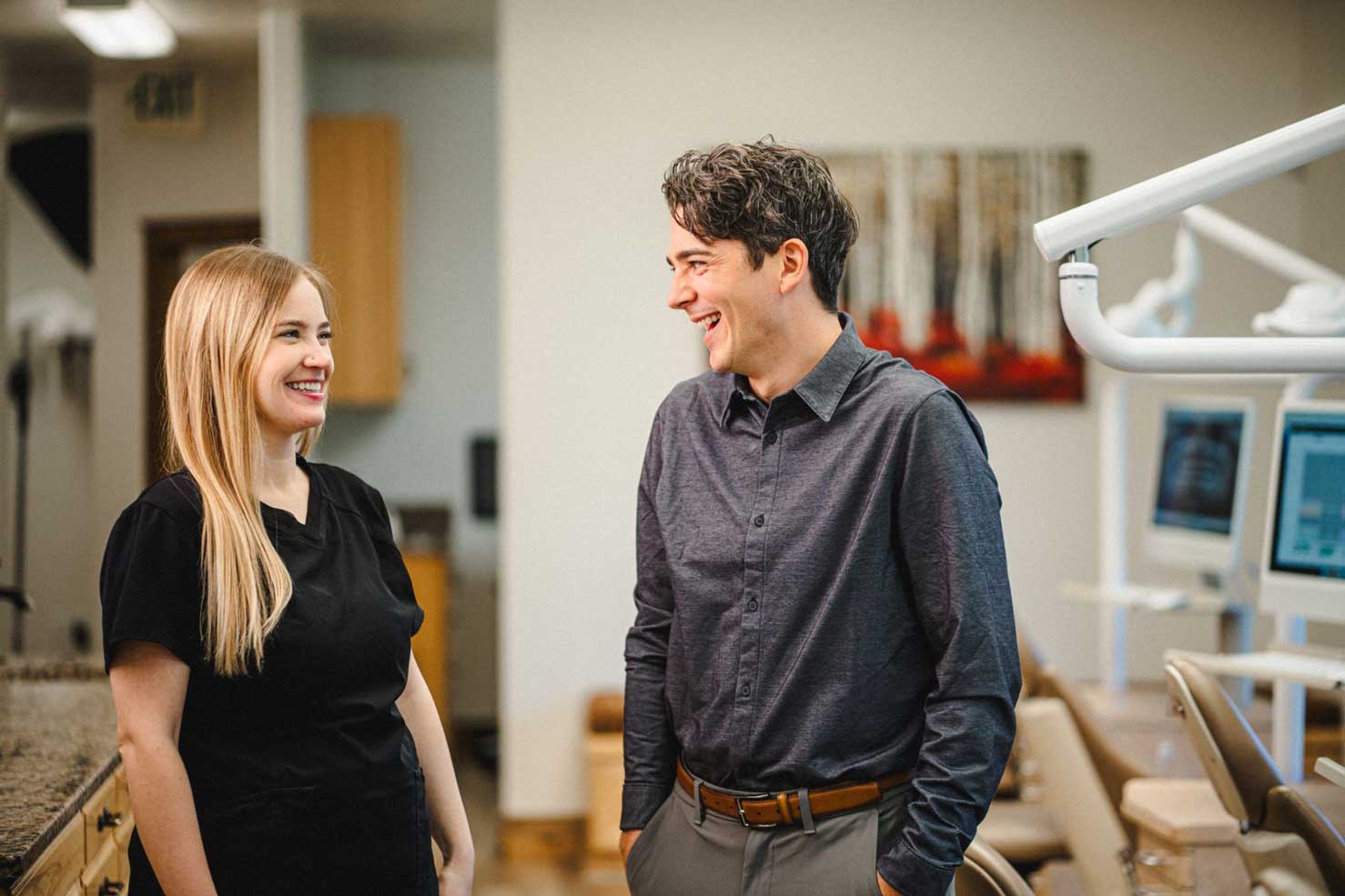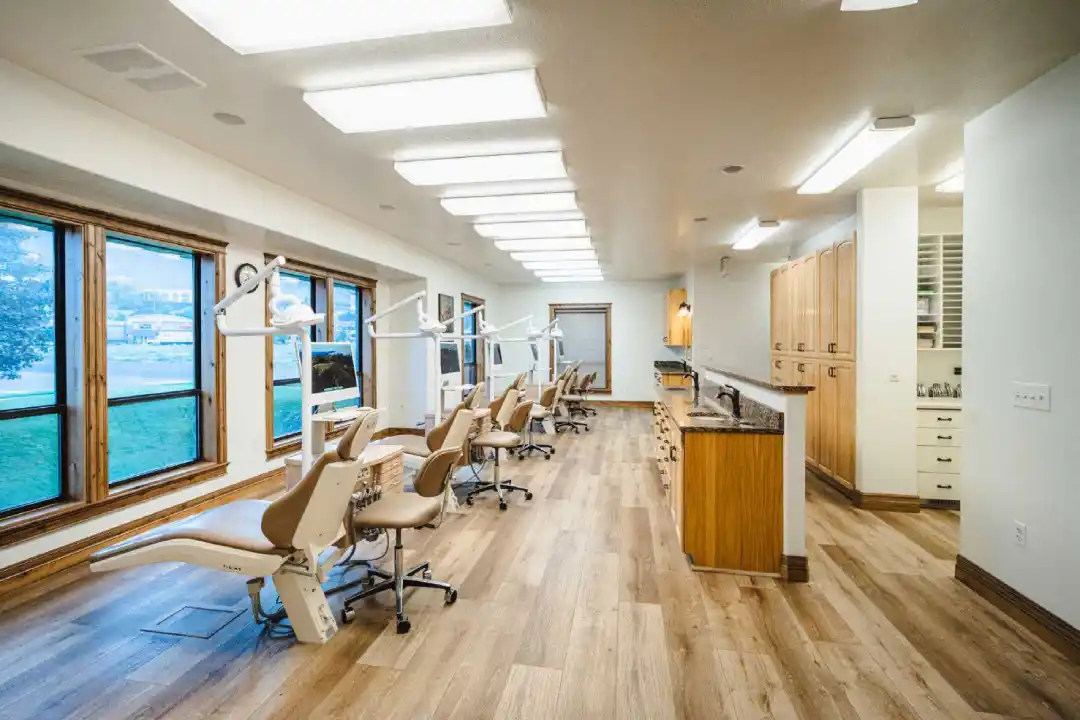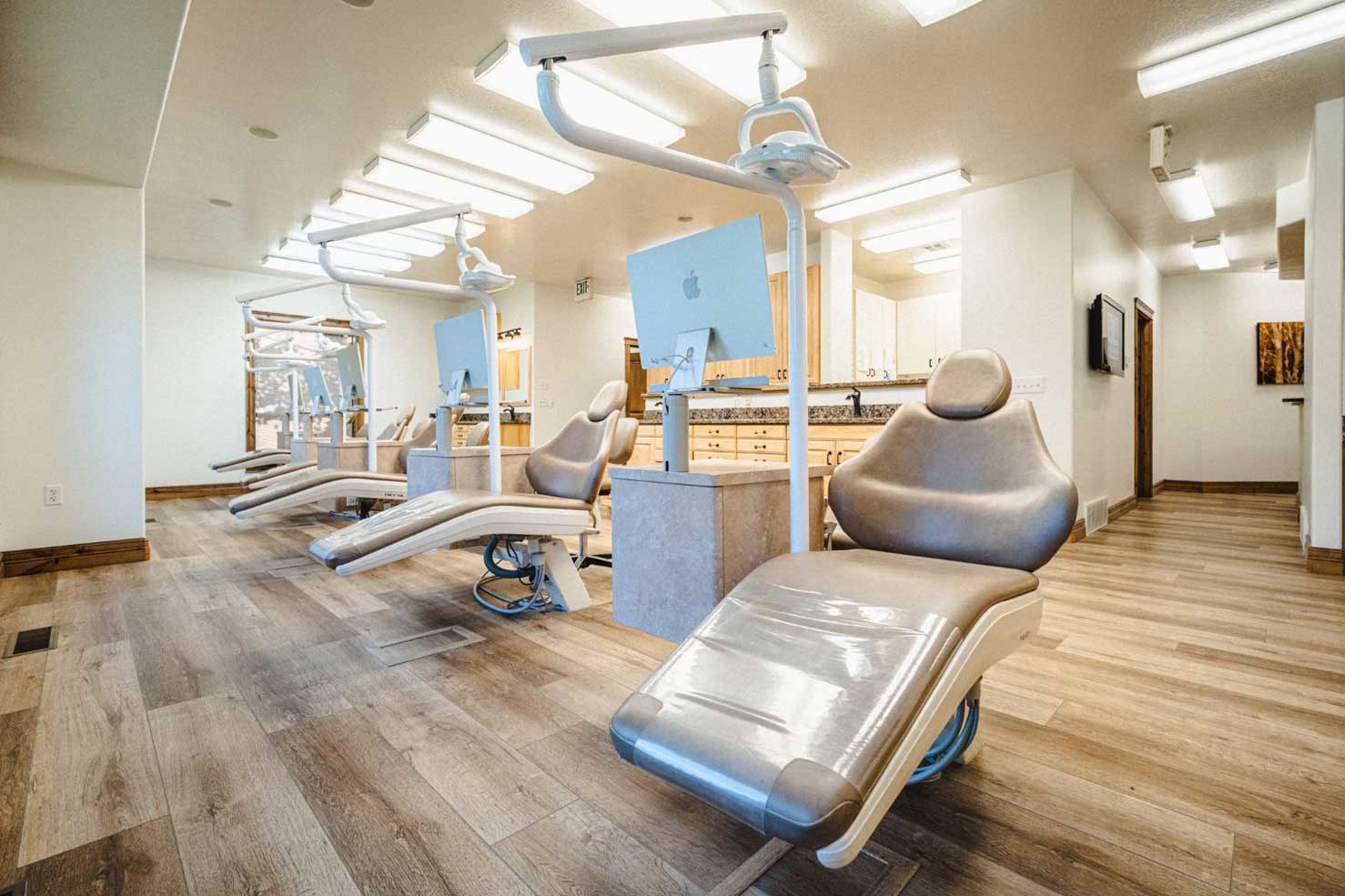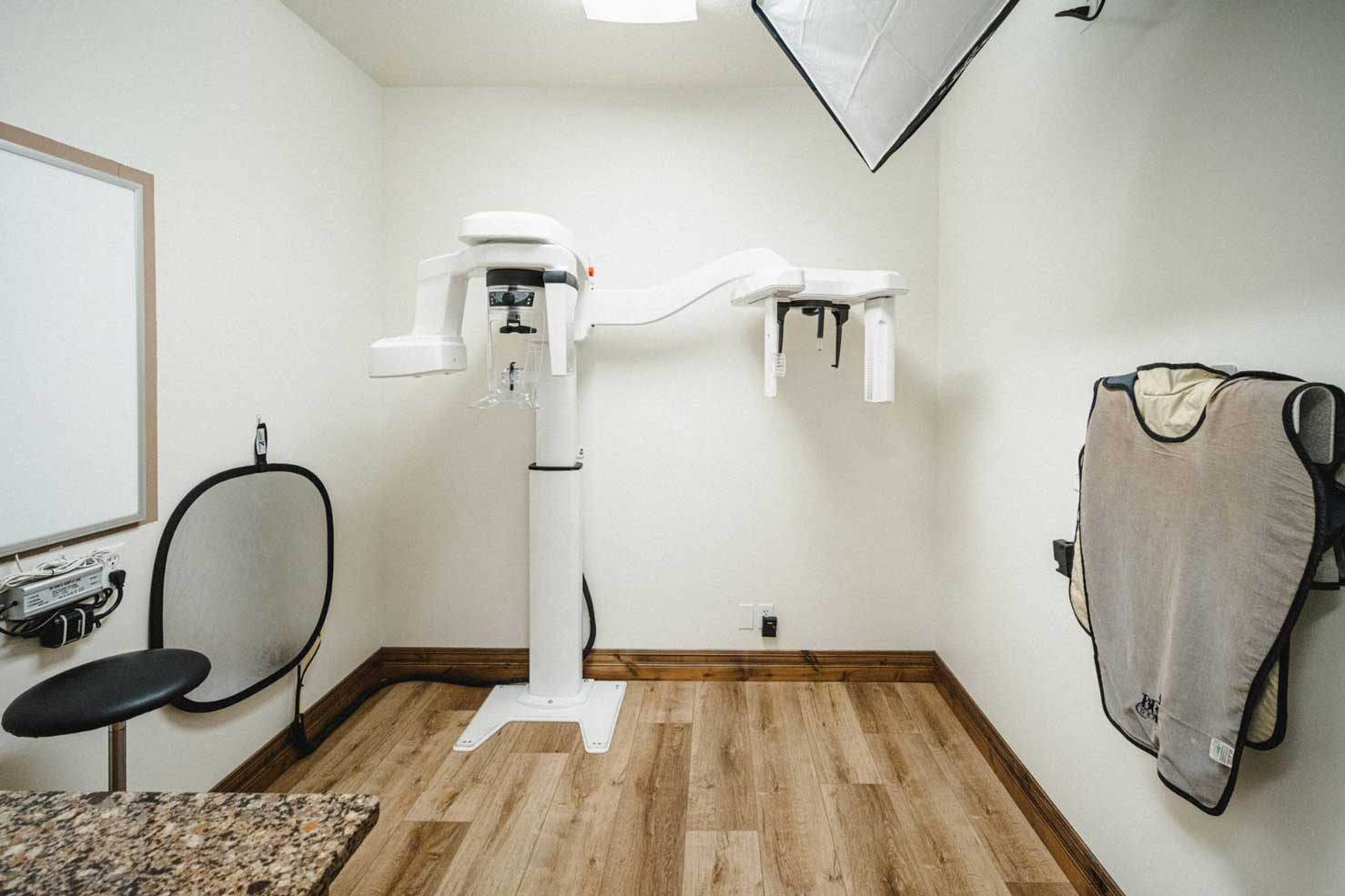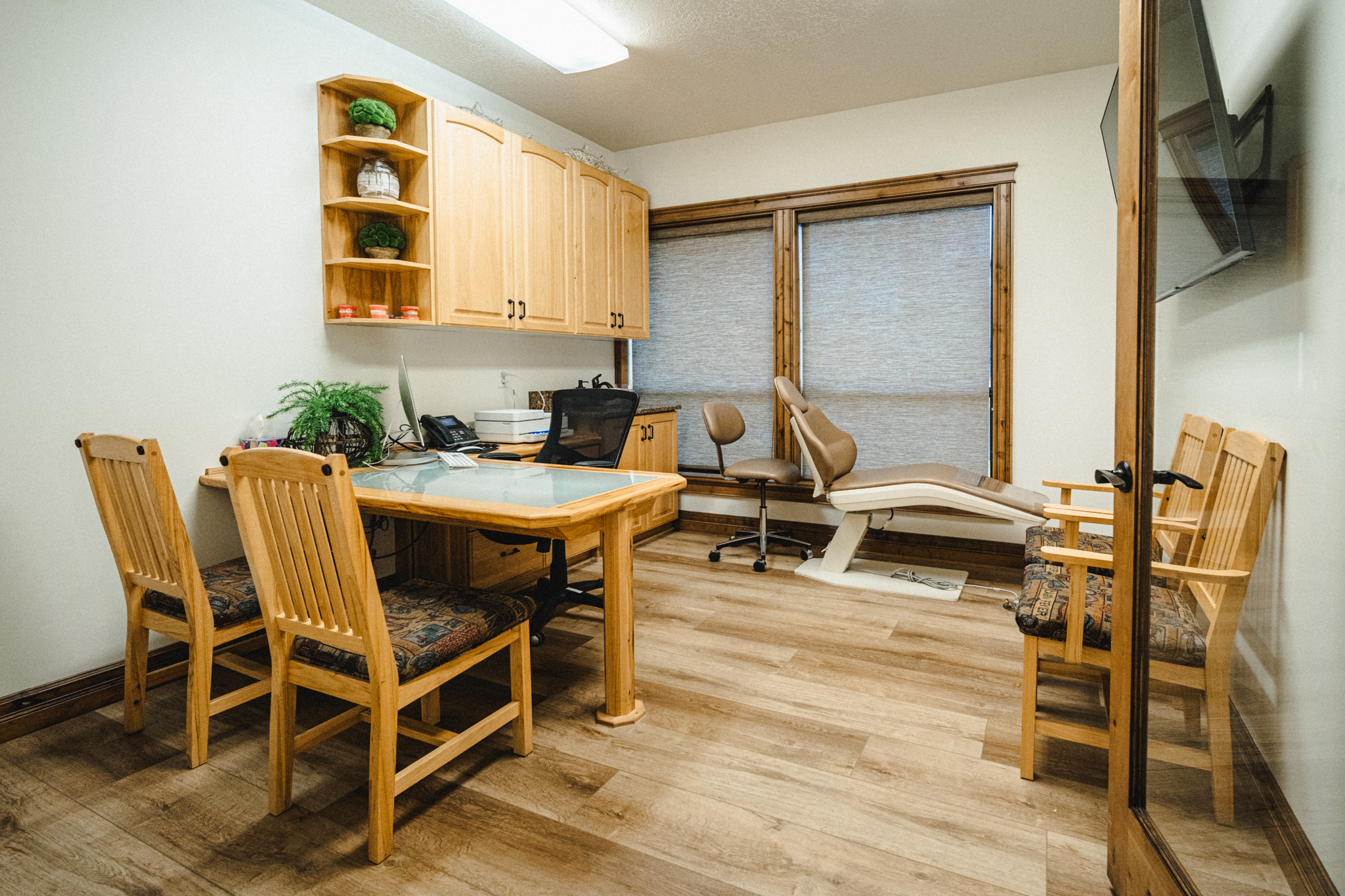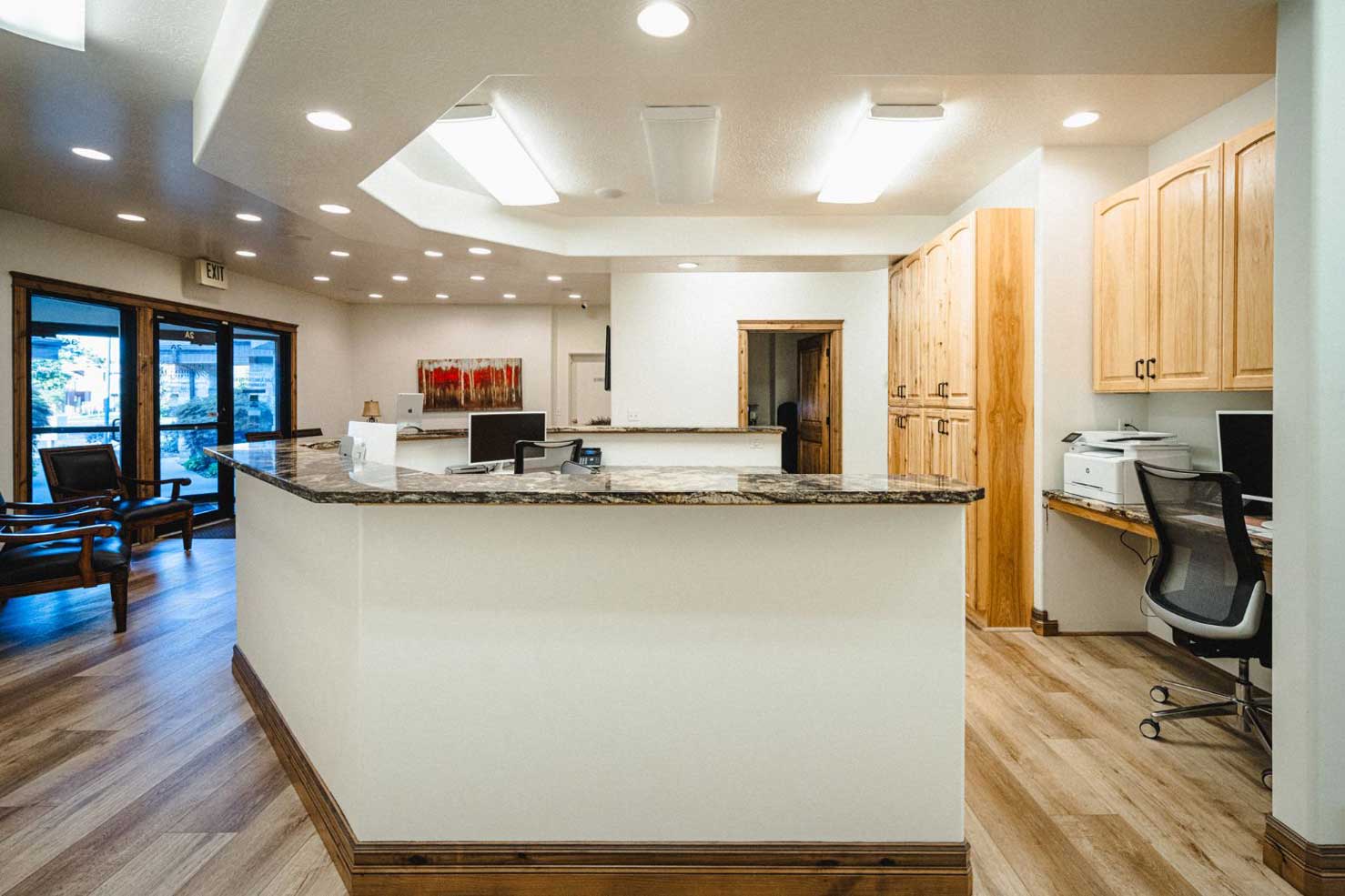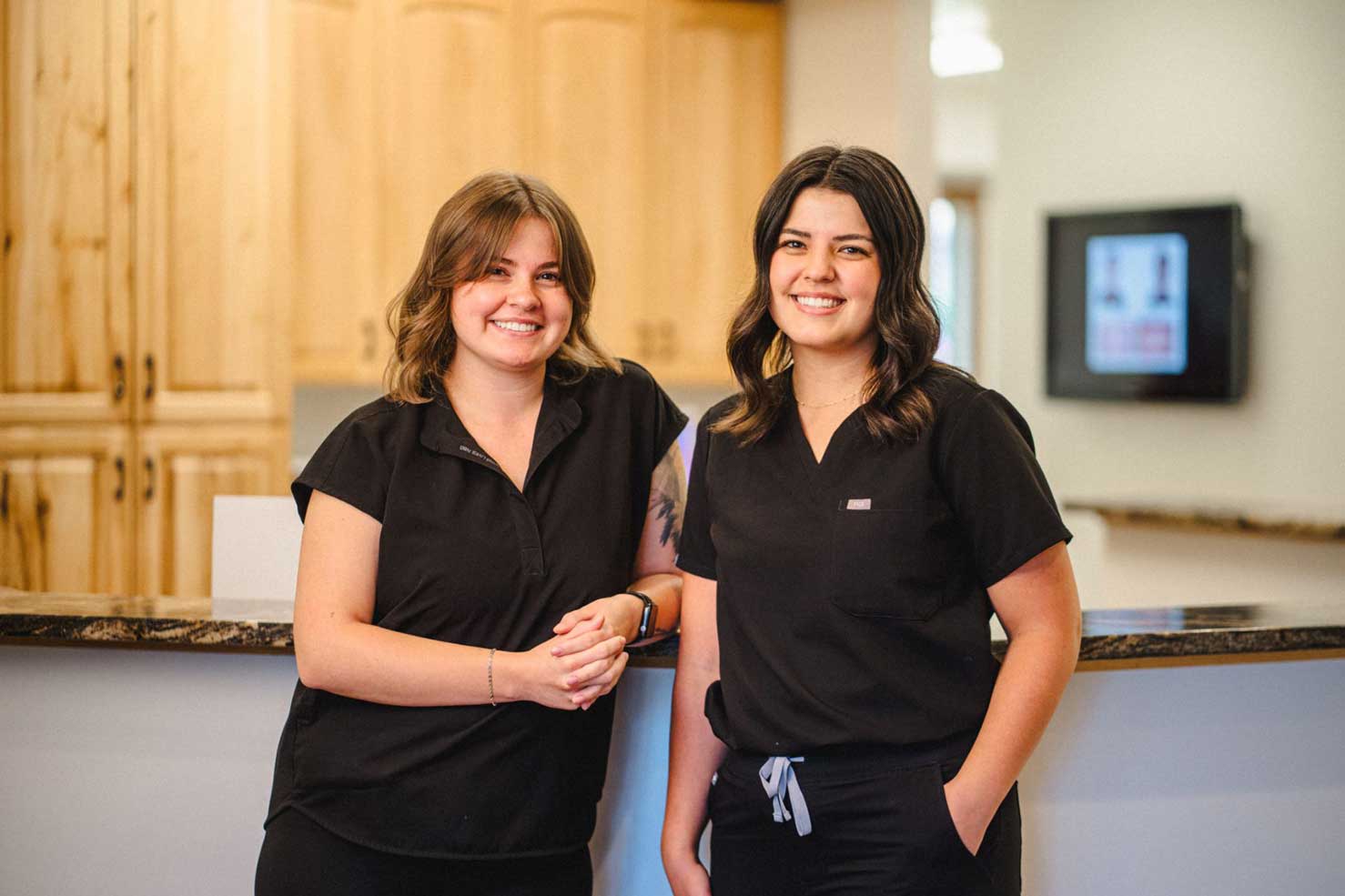Early Orthodontic Treatment
What is the difference between early orthodontic treatment and regular orthodontic treatment, and why might my child need early treatment? How will early treatment benefit my child in the long run?
These are just a few of the questions surrounding the topic of early orthodontic treatment for children. The American Association of Orthodontists recommends that children see an orthodontist as early as age seven. At this point, our team will evaluate whether your child will need orthodontic treatment.
Early treatment (also known as Phase One) typically begins around age eight or nine (Phase Two will begin around age 11 or older). The goal of early treatment is to correct the growth of the jaw and certain bite problems, such as underbite. Early treatment also helps to make room for permanent teeth to come in properly, lessening the chance of extractions in the future.
How can you tell if your child may need orthodontic treatment? There are a few key signs to look out for:
- Early or late loss of baby teeth (your child should typically start losing teeth around age five, and will have all permanent teeth around age 13)
- Difficulty chewing and/or biting
- Mouth breathing
- Your child continues sucking his or her thumb after age five
- Speech impediments
- Protruding teeth (the top teeth and the bottom teeth extend away from each other)
- Teeth that don’t come together in a normal manner or even at all
- Shifting of the jaw when your child opens or closes his or her mouth (crossbites)
- Crowded front teeth around age seven or eight
What causes orthodontic problems and how will early treatment benefit my child?
Orthodontic problems such as crowding of the teeth, too much space between the teeth, jaw growth problems, protruding teeth, and bad bites can be inherited or caused by injury to the mouth, early or late loss of baby teeth, or thumb-sucking habits.
Most children lose all their baby teeth by age 13, and by the end of their teen years, the jaw bones will harden and stop growing. Orthodontic procedures for adults often take more time and can involve tooth extraction or oral surgery. Receiving early orthodontic treatment as a child can help prevent the need for orthodontics as an adult, leaving little to no chance of extraction or surgery in the future.
If your child is between the ages of seven and eight and shows signs of needing orthodontic care, or if you have been directed by your family dentist to visit the orthodontist, please contact our practice and schedule an appointment. Our team will provide your child with an initial exam, and discuss with you the best steps to take toward caring for your child’s smile.

Gummy Smile Correction
At Albrechtsen & Fanelli Orthodontics, we understand that a gummy smile can affect your confidence and how you feel about your smile. A balanced smile, where the teeth and gums are in harmony, can make a world of difference in your appearance and self-esteem. Our practice offers effective solutions to correct gummy smiles, including surgical methods for severe cases or braces, clear aligners, TADs, and laser treatment for most.
As part of our orthodontic treatment, we incorporate Smile Arc Protection, a technique designed to enhance the natural curvature of your smile. By positioning the upper front teeth in a slightly more elevated and aesthetically pleasing arc, we can reduce the appearance of a gummy smile. This method ensures that your smile looks more natural and balanced, with your teeth taking center stage rather than your gums.
What is a gummy smile?
A gummy smile, also known as excessive gingival display, occurs when too much gum tissue shows above the upper teeth when you smile. This can make your teeth appear shorter or smaller than they actually are, leading to a smile that may feel unbalanced. A gummy smile can be caused by several factors, including:
- Excessive Gum Tissue — Overgrowth of gum tissue can cover more of the teeth than desired.
- Short Upper Lip — A hyperactive or short upper lip can lift higher than usual, revealing more gum tissue.
- Teeth Alignment or Size — Teeth that haven’t fully erupted or are naturally shorter can contribute to a gummy smile.
Non-Surgical Solutions for Gummy Smile Correction
At Albrechtsen & Fanelli Orthodontics, we offer non-surgical treatments that are effective and minimally invasive for correcting a gummy smile. These options are designed to improve the balance between your teeth and gums, enhancing the overall aesthetics of your smile.
Misalignment or improper eruption of teeth is one of the most common causes of a gummy smile. Braces or clear aligners can reposition the teeth, reducing the appearance of excess gum tissue. We also may incorporate TADs (Temporary Anchorage Devices) to guide more specific tooth movement, reducing the appearance of a gummy smile. By adjusting the position of the teeth and bite, we can create a more harmonious smile where your teeth and gums are in proportion.
Laser treatment is another effective, minimally invasive way to correct a gummy smile. This treatment, known as gum contouring or gingivectomy, uses a precise dental laser to gently remove excess gum tissue and reshape the gum line for a more balanced and aesthetically pleasing smile. Laser treatment offers many benefits, including faster healing times, reduced discomfort, and minimal bleeding compared to traditional surgical methods.
Our board-certified orthodontists have extensive experience in diagnosing and treating gummy smiles using non-surgical methods. We focus on creating treatment plans that enhance your smile’s aesthetics while ensuring your comfort and satisfaction throughout the process.
If a gummy smile is affecting your confidence, we can help! Our goal is to help you achieve a smile that you’ll love to share with the world. Contact us today to request a consultation and learn more about how we can correct your gummy smile with our advanced treatments.
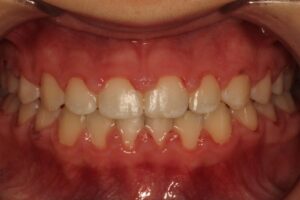

Gingivectomy Treatment
At Albrechtsen & Fanelli Orthodontics, we take pride in offering comprehensive solutions for all your orthodontic needs, including specialized treatments like gingivectomy. This procedure is ideal for patients with excess gum tissue, which can create the appearance of a “gummy” smile or make teeth seem shorter than they actually are. A gingivectomy not only enhances the aesthetics of your smile but also improves oral health by making it easier to keep your gums and teeth clean, reducing the risk of gum disease.
Surgical Gingivectomy
For patients requiring a more in-depth correction, we offer traditional surgical gingivectomy. This option is often recommended when significant amounts of gum tissue need to be removed or when bone reshaping is necessary to achieve the best results. During this procedure, the excess gum tissue is carefully removed to reveal more of your natural tooth structure. While the surgical method involves a longer recovery period, it provides a permanent solution to overly prominent gums, dramatically improving your smile’s balance and symmetry. Our team will guide you every step of the way, ensuring a smooth experience from consultation to recovery.
Laser Gingivectomy
For a less invasive alternative, we offer laser gingivectomy — a modern approach to gummy smile correction. Using cutting-edge laser technology, we can gently and precisely remove excess gum tissue without the need for surgery or a lengthy healing process. The advantages of laser gingivectomy include faster healing times, minimal discomfort, and reduced bleeding, allowing you to return to your normal routine more quickly. This method is ideal for patients who desire immediate results with less downtime. With our advanced laser equipment, we can deliver precise, personalized treatments tailored to your unique smile.
At Albrechtsen & Fanelli Orthodontics, we understand that every patient is different, and we’re committed to providing customized care to help you achieve the smile of your dreams. Whether you choose surgical or laser gingivectomy, our experienced team will ensure your treatment is comfortable, effective, and designed to last. We invite you to request a consultation to learn more about the best treatment for you and to start your journey toward a more confident, healthier smile!
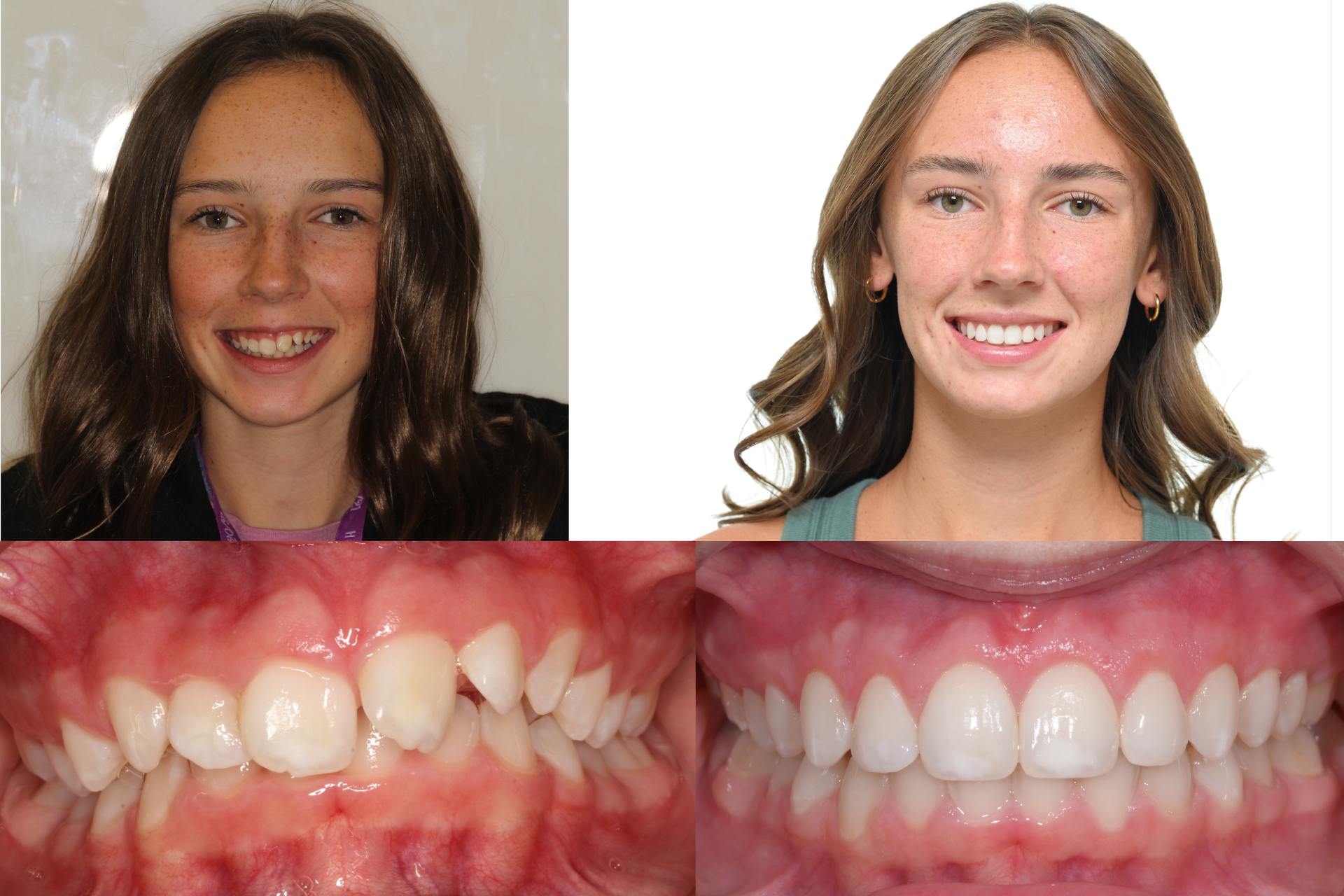
TADs
At Albrechtsen & Fanelli Orthodontics, we are committed to utilizing advanced techniques and orthodontic technologies to achieve the best possible outcomes for our patients. One such innovative approach is the use of Temporary Anchorage Devices (TADs). These small but powerful tools enhance the precision and efficiency of orthodontic treatments, allowing for more effective results.
Temporary Anchorage Devices (TADs) are small, biocompatible screws or plates that are temporarily placed in the mouth to provide additional support during orthodontic treatment. Unlike traditional braces, which rely on the teeth themselves for anchorage, TADs create a stable anchor point that allows for more controlled and precise tooth movement.
TADs are used to:
- Facilitate Complex Movements — By providing a stable anchorage point, TADs make it possible to achieve complex tooth movements that might be challenging with conventional braces alone.
- Reduce the Need for Extractions — In some cases, TADs can help create the space needed for proper tooth alignment without requiring the removal of teeth.
- Enhance Treatment Efficiency — TADs can speed up the overall treatment process by allowing for more direct and controlled adjustments.
The placement of TADs is a simple, minimally invasive procedure performed in our office. The device is gently screwed into the bone of the mouth, usually in the upper or lower jaw. Local anesthesia is used to ensure comfort during the procedure. Once in place, TADs are used as a fixed anchor point for orthodontic appliances, and they are typically removed once their purpose is fulfilled.

MARPE
One specific application of TADs is the MARPE (Maxillary Expansion with Rapid Palatal Expander) technique. MARPE is an advanced orthodontic treatment designed to address issues related to a narrow upper jaw (maxilla) and improve the alignment of the bite.
MARPE is a non-surgical approach to expanding the upper jaw by using a specialized device combined with TADs. This technique is particularly effective for adolescents and adults who need to correct a constricted upper jaw or an imbalanced bite. The MARPE device works by gradually expanding the palatal arch, which widens the upper jaw and creates more space for proper alignment of the teeth.
- MARPE provides an effective alternative to surgical jaw expansion, making it a less invasive option for addressing jaw width issues.
- By expanding the upper jaw, MARPE can help correct bite issues, reduce crowding, and improve overall dental alignment.
- Widening the upper jaw can lead to improved facial proportions and a more harmonious smile.
During MARPE treatment, the device is attached to the upper molars and anchored by TADs placed in the palate. The device is then adjusted periodically to gradually expand the upper jaw. The process is closely monitored by our board-certified orthodontists to ensure optimal results and patient comfort.


